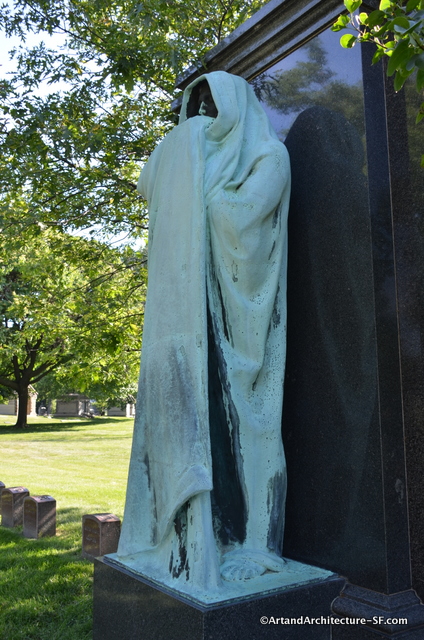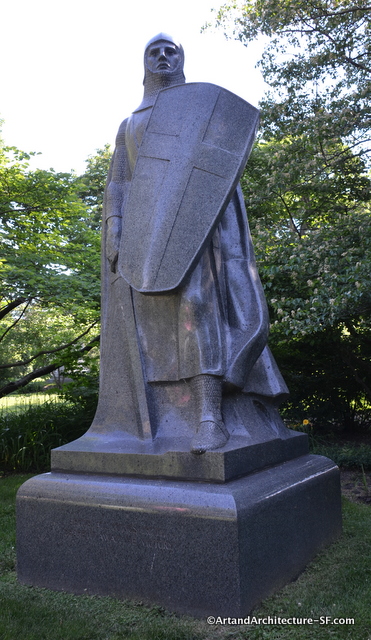Columbus Circle
In front of Union Station
Washington D.C.
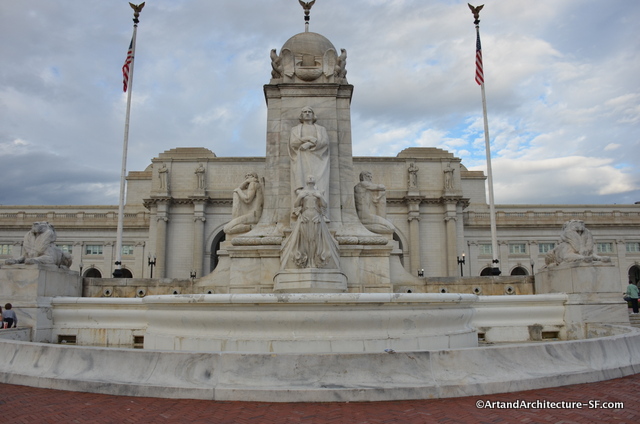
The fountain, which was co-created by Lorado Taft and architect Daniel Burnham, was influenced by a fountain designed by Frederick MacMonnies that was displayed at the World’s Columbian Exposition in Chicago in 1893. MacMonnies work depicted a figure of Columbia sitting on a ship with a figure of Fame standing on a ship prow holding a trumpet and a representational figure of Time dominating the stern.
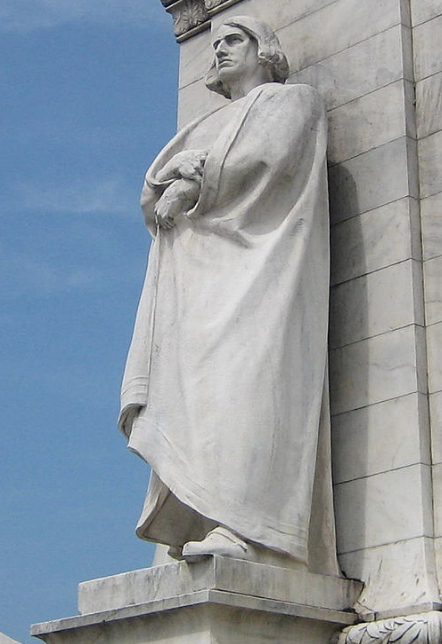 With this sculpture Lorado Taft has Columbus standing, arms crossed, facing the Capitol. He is flanked by an American Indian, representing the “New World” facing West and a bearded elderly man representing the “Old World” facing East. In front of Columbus is Discovery leading the way, and above Columbus is a globe of the world surrounded by American Eagles.
With this sculpture Lorado Taft has Columbus standing, arms crossed, facing the Capitol. He is flanked by an American Indian, representing the “New World” facing West and a bearded elderly man representing the “Old World” facing East. In front of Columbus is Discovery leading the way, and above Columbus is a globe of the world surrounded by American Eagles.
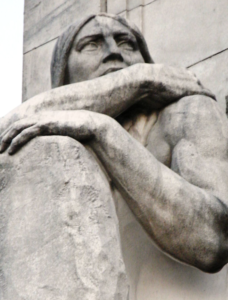
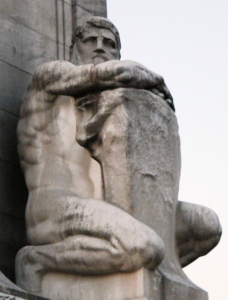
Lobbying began in 1906 for the sculpture by the Knights of Columbus and the US Congress approved $100,000 for the sculpture on March 4, 1907, along with the city, who also donated funds for the creation of the work.
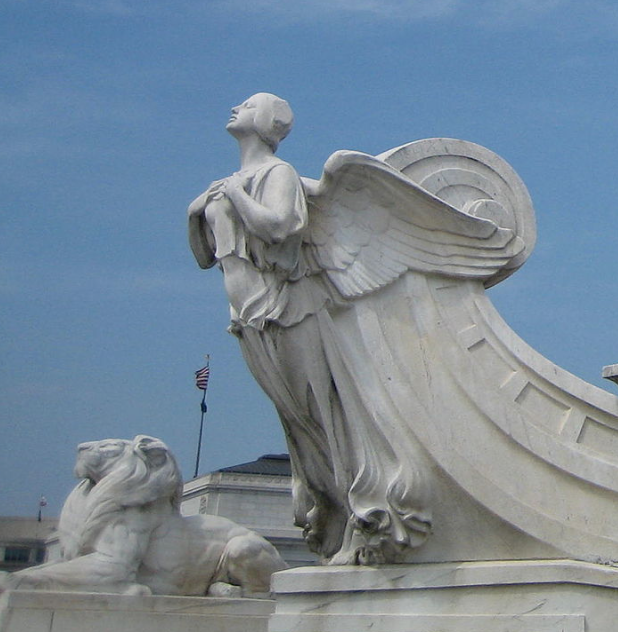 In May 1907 a commission was formed for the memorial fountain headed by prominent members of the Senate and William Howard Taft (no relation), who was Secretary of War at the time and served as committee chairman. Upon agreeing on the location for the fountain, a call for designs was requested by artists from America, Italy and Spain. The reason for the three countries stemmed from the committee idea that “if it should be from the hand of an American, the land which Columbus gave to the world; from an Italian, the land which gave Columbus to the world, or from Spain, the land which made Columbus’s achievement possible.”
In May 1907 a commission was formed for the memorial fountain headed by prominent members of the Senate and William Howard Taft (no relation), who was Secretary of War at the time and served as committee chairman. Upon agreeing on the location for the fountain, a call for designs was requested by artists from America, Italy and Spain. The reason for the three countries stemmed from the committee idea that “if it should be from the hand of an American, the land which Columbus gave to the world; from an Italian, the land which gave Columbus to the world, or from Spain, the land which made Columbus’s achievement possible.”
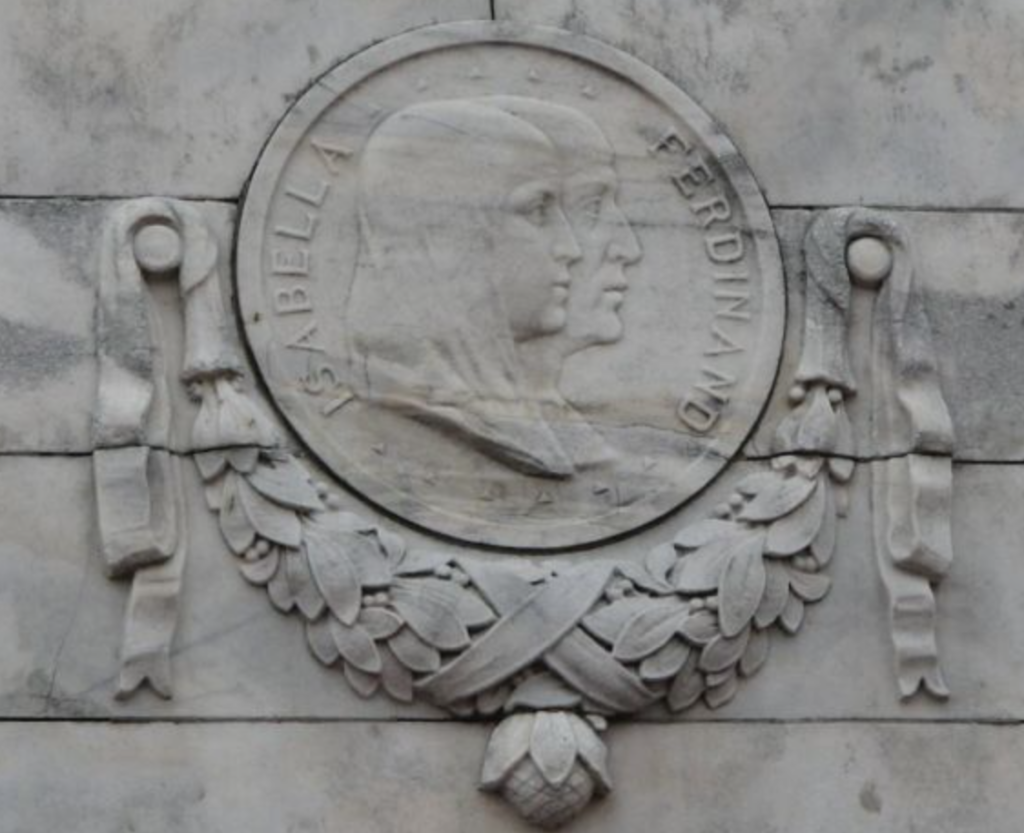
On the rear of the monument is a medallion in honor of Spanish financiers King Ferdinand and Queen Isabella and three flagpoles representing Columbus’ three ships. There is an inscription that reads: “To the memory of Christopher Columbus, whose high faith and indomitable courage gave to mankind a new world.”
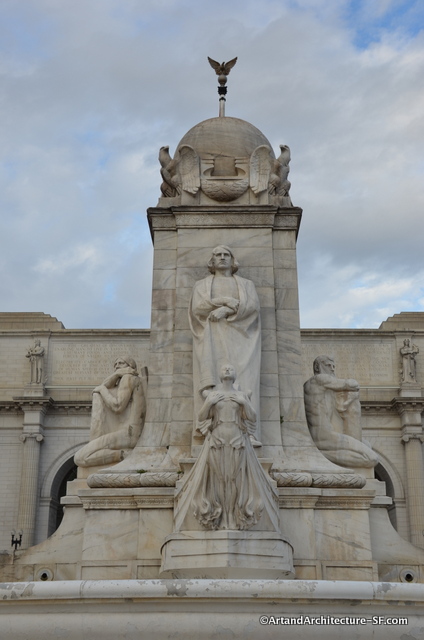


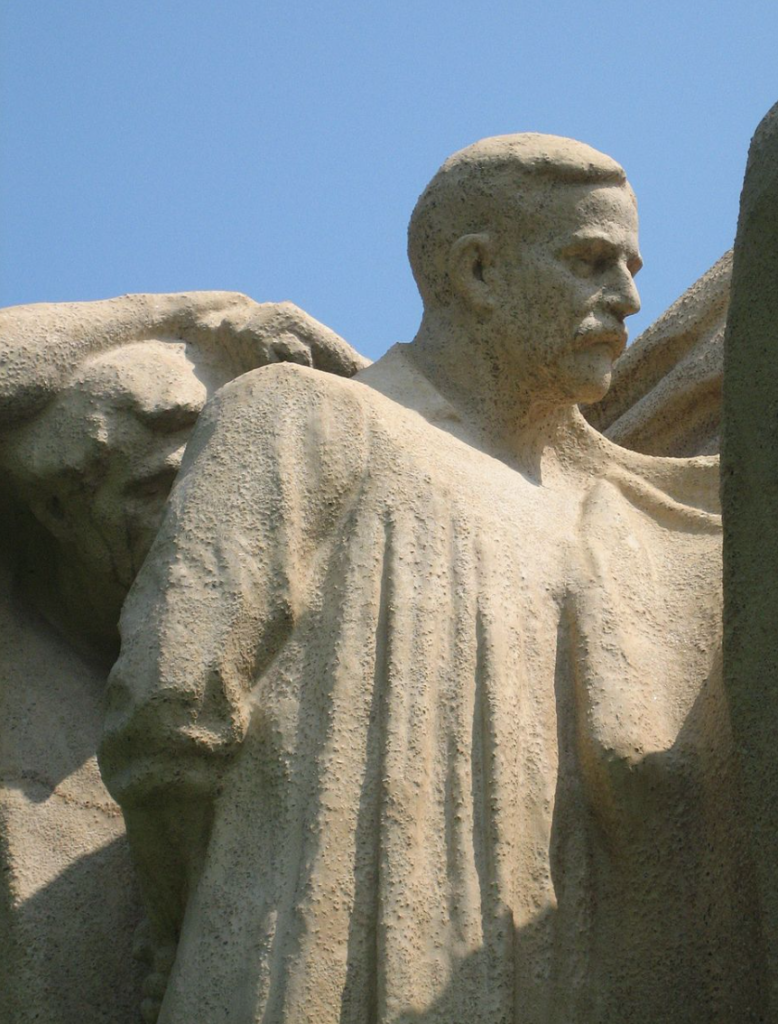
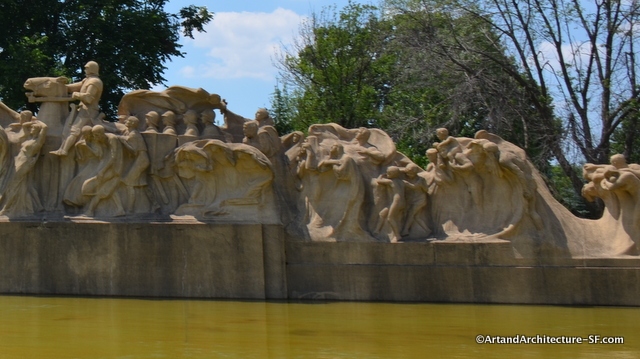 Lorado Taft initially conceived a sculpture carved from granite or Georgia marble, however, the trust only allotted enough funds for a concrete structure.
Lorado Taft initially conceived a sculpture carved from granite or Georgia marble, however, the trust only allotted enough funds for a concrete structure.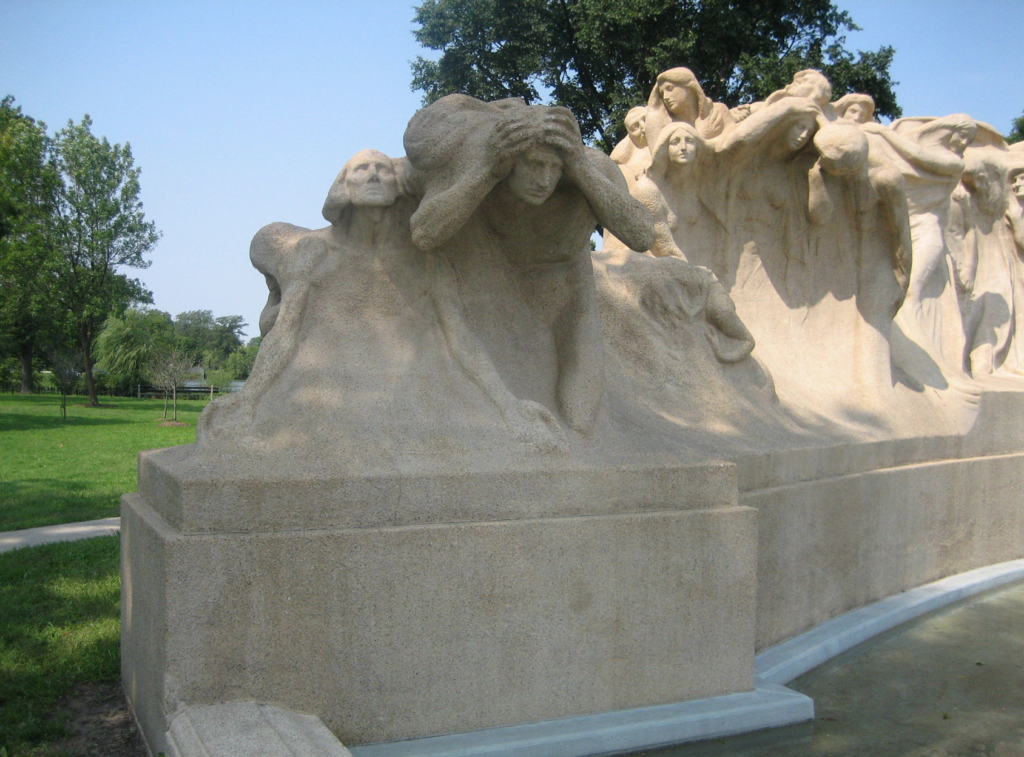 Lorado Zadoc Taft was born in Elmwood, Illinois, in 1860 and died in his home studio in Chicago in 1936.
Lorado Zadoc Taft was born in Elmwood, Illinois, in 1860 and died in his home studio in Chicago in 1936.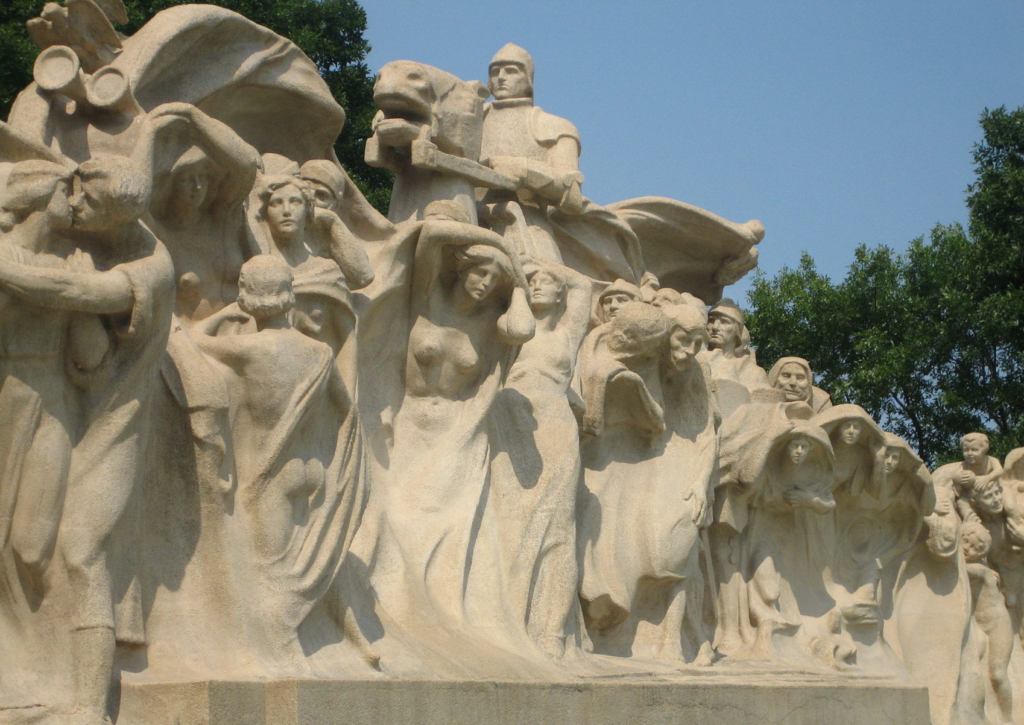 Taft’s body of work is impressive. Some notable sculptures around Chicago include Eternal Silence and The Crusader both at Graceland Cemetery, and Fountain of the Great Lakes at the Art Institute. He also sculpted the Columbus Fountain at Union Station in Washington DC.
Taft’s body of work is impressive. Some notable sculptures around Chicago include Eternal Silence and The Crusader both at Graceland Cemetery, and Fountain of the Great Lakes at the Art Institute. He also sculpted the Columbus Fountain at Union Station in Washington DC.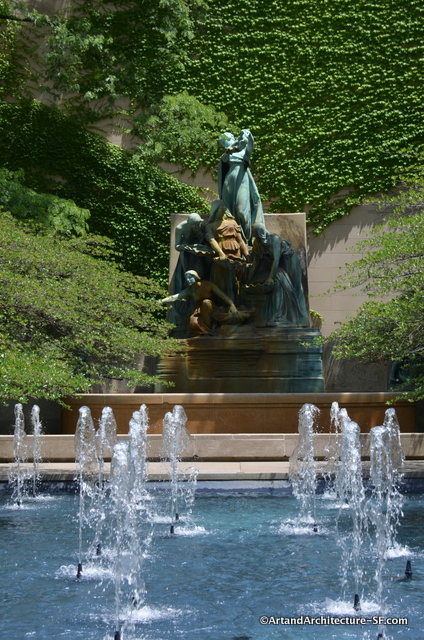
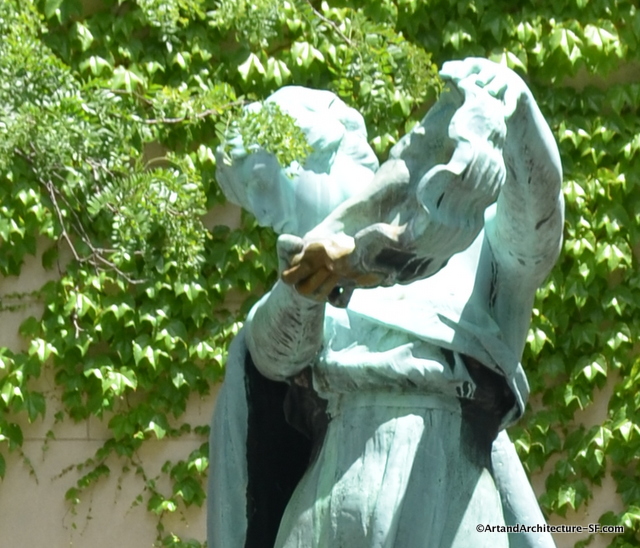
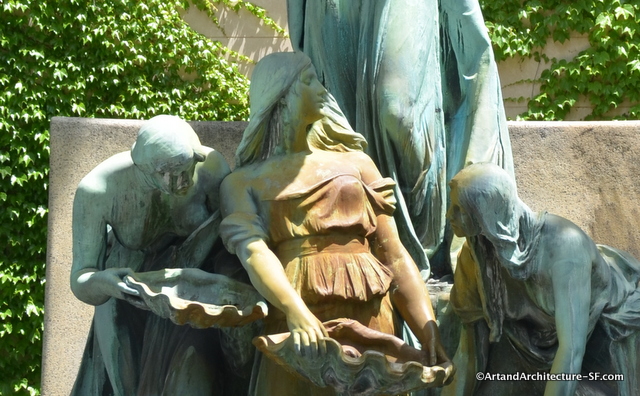
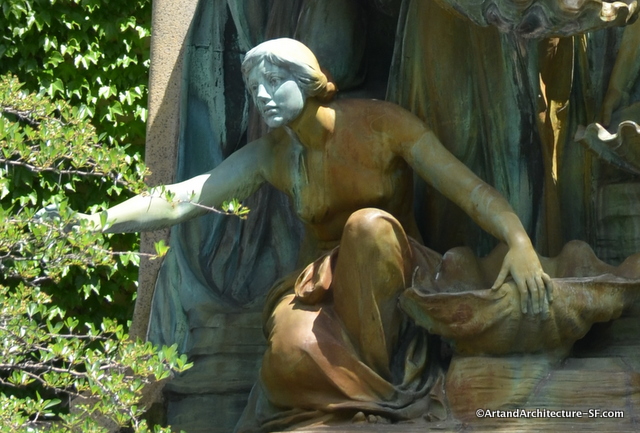
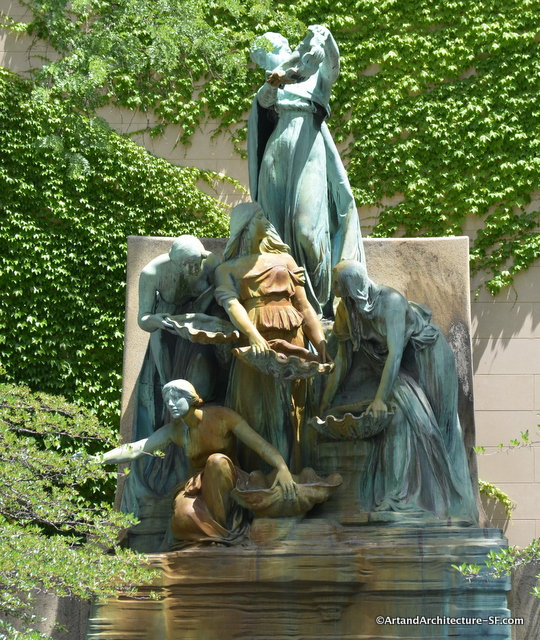
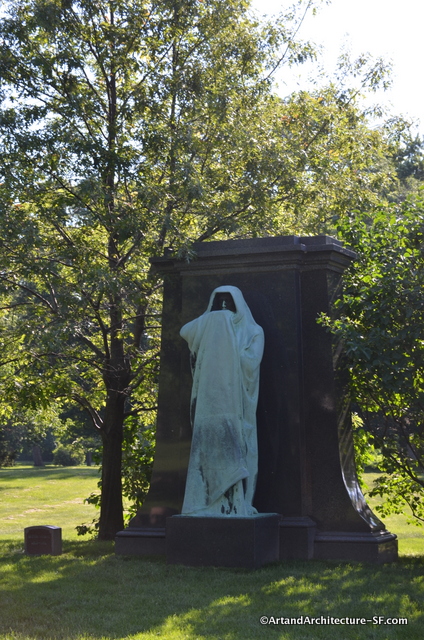 The Eternal Silence, (also called Eternal Silence or Statue of Death) marks the grave of Dexter Graves, who led a group of thirteen families that moved from Ohio to Chicago in 1831, making them some of Chicago’s earliest settlers. Graves died in 1844, seventy-five years before the creation of the statue, and sixteen years before Graceland Cemetery was founded; his body was presumably moved to Graceland from the old City Cemetery. The funds for the monument were provided in the will of his son, Henry, who died in 1907. The will provided $250,000 for a Graves family mausoleum, they received the statue instead.
The Eternal Silence, (also called Eternal Silence or Statue of Death) marks the grave of Dexter Graves, who led a group of thirteen families that moved from Ohio to Chicago in 1831, making them some of Chicago’s earliest settlers. Graves died in 1844, seventy-five years before the creation of the statue, and sixteen years before Graceland Cemetery was founded; his body was presumably moved to Graceland from the old City Cemetery. The funds for the monument were provided in the will of his son, Henry, who died in 1907. The will provided $250,000 for a Graves family mausoleum, they received the statue instead.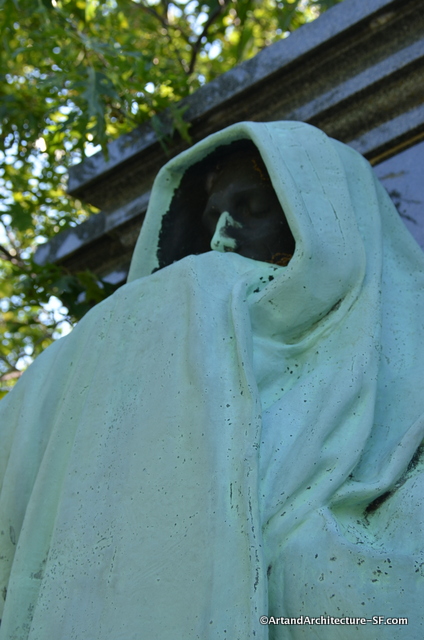 The statue was sculpted by Lorado Taft and cast by a Chicago foundry owned by Jules Bercham.
The statue was sculpted by Lorado Taft and cast by a Chicago foundry owned by Jules Bercham.